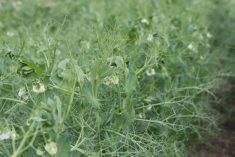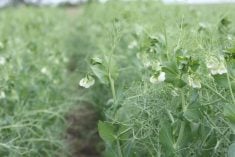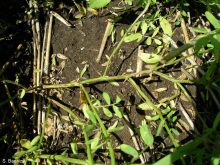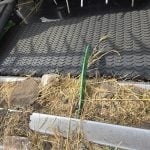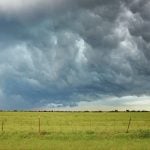Most farmers probably assume the credit crunch on Wall Street won’t squeeze their operating lines of credit, fertilizer loans and other farm credit sources.
That’s a questionable assumption, agricultural economists say. It may not matter if a farm is financially solid if its credit provider has its credit cut.
“They may not have it,” said University of Manitoba agricultural economist Brian Oleson.
“If that river of credit stops flowing as well as it has been and dries up, what happens?”
Fallout from Wall Street’s financial troubles have already hit at least one major farm equipment supplier.
Read Also

Volunteers help exotic animal farm rebuild
Exotic animal farm loses beloved camel and pony to huge hail storm that gripped the Brooks, Alta. area as a community member starts a fundraiser to help the family recover from the financial and emotional damage.
When Caterpillar recently went to the market to borrow operating money, usually a routine matter, it was forced to pay a much higher interest rate, even though it is a blue chip company and one of the 30 companies in the Dow Jones Industrial Average.
In the months ahead, farmers who expect operating lines from banks and credit unions, and those expecting to buy inputs on credit from suppliers before putting in their crop, could begin to feel the effects of the world financial crisis.
“The crunch for farmers is likely going to be seen at the seeding of the next crop,” said Oleson.
“The liquidity and the credit available on the input suppliers’ side, it’s hard to say what the squeezes are going to be there.”
There are no signs yet of Canadian banks and credit unions facing disaster because of the crisis. That’s good for farmers, because if financial institutions get in trouble, credit that was easy for a farmer to arrange can as easily be removed.
“Most farm loans are demand loans,” said Bill Brown, an agricultural economist at the University of Saskatchewan.
“If the bank gets in trouble and calls your loans and you don’t have the cash, you have to sell your assets. And you sell them at fire sale prices.”
Brown thinks most prairie farmers are not vulnerable to the crisis because they have a big crop in the bin.
Also fortunately, most farmers have a low debt-to-assets ratio of about 20 percent. That means if a farm has $500,000 in land and machinery, it has about $100,000 in debt.
Farmers are generally in a much stronger financial situation than most businesses, which have higher debt-to-asset ratios.
But Brown warns that the ratio is based on farmland values, which have massively increased in recent years. The average contains both older farmers who have almost zero debt, and young farmers who generally have much higher debt.
“Anyone who’s bought a lot of farmland in recent years is in a worrisome situation if the land values go down,” said Brown.
Fortunately for most farmers owing money for land, those loans aren’t demand loans that can be called in any time, Oleson said. Term loans offer the borrower security as long as they can make the payments.
“People with significant fixed capital inputs are likely fine,” said Oleson.







